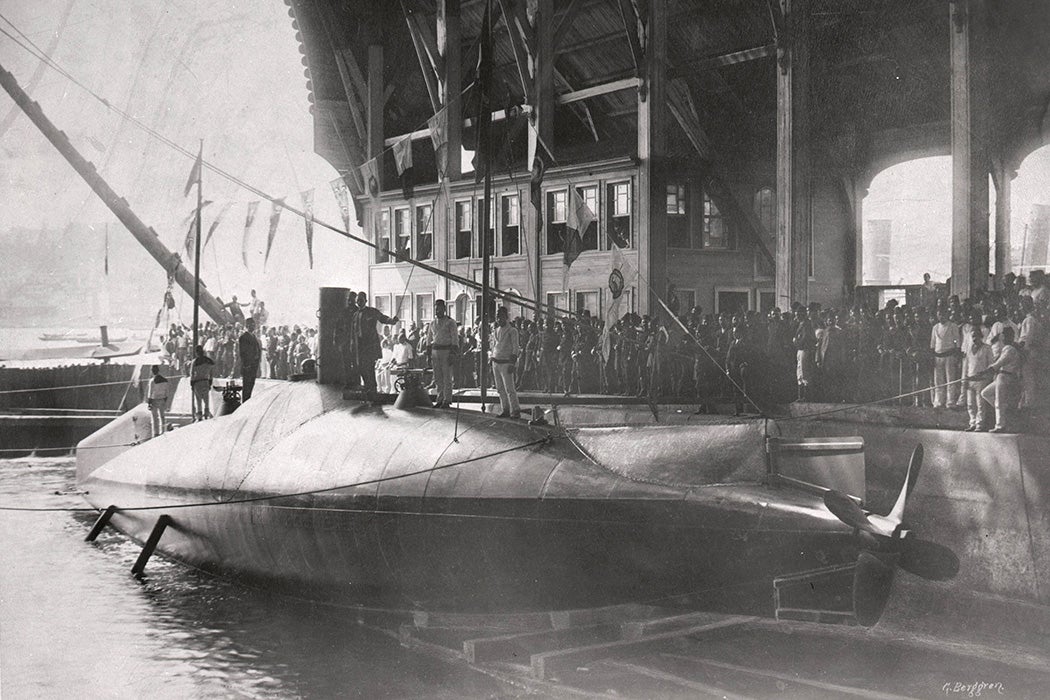Think the global arms trade is a phenomenon of the late twentieth century and the present? Think again: a world flush with weapons, sold legally and on the black market, fueled violence and conflict in the late nineteenth century as well. Historian Ramazan Hakki Öztan explores how that era’s European arms race created a global military surplus. These “tools of revolution” were then funneled, often illicitly, into the cauldron of a disintegrating Ottoman Empire.
“The Ottoman Empire descended into an era of systemic political violence marked by an endless cycle of popular uprisings, rural irregular conflicts and urban guerrilla warfare,” Öztan writes.
There were plenty of other states, arms merchants, and weapons manufacturers eager to profit off this endless cycle. What Öztan calls the “global marketplace of revolution” was the flip side of the Ottoman incorporation into the world economic system. Weapons were commodities, too, and “Ottoman revolutionary actors enjoyed increasingly easier access to a range of tools of revolution thanks to globally expanding circuits of illicit exchange.”
The Balkans in particular were a hotbed of nationalism, independence movements, and great-power competition. The 1878 Treaty of Berlin, which ended the Russo-Turkish War, had attempted to stabilize this mountainous, multi-ethnic region south of the Danube. But the treaty also increased the regional number of “customers for second-hand weapons.”
The empires of Austria-Hungary, Russia, and the Ottomans still controlled portions of the region around the newly independent or semi-independent states of Serbia, Greece, Montenegro, Romania, and Bulgaria. All of these new states or principalities spent their first decades “modernizing their bureaucratic apparatus and building up their military capacity.”
In addition to jockeying for influence and control over the region, the Ottomans, Britain, France, Germany, Austria-Hungary, and Russia were all engaged in an intense arms race. The European balance of power minimized “the number and extent of military conflict on the European continent” for much of the century. Yet efforts to increase the size and capabilities of national militaries kept increasing. National budgets became dominated by military spending. Germany was the fastest-growing; Austria-Hungary fell behind; Britain concentrated on seapower; France could not compete with Germany.
What all the competitive innovation and industrial production resulted in was a lot of “obsolete” but still deadly weaponry. The tumultuous Balkan market clamored for it—sometimes at the urging of the dealers themselves, only too happy to gin up sales.
For instance, “merchant of death” Basil Zaharoff (1849–1936) bragged “I made wars so that I could sell arms to both sides.” An example of his work: in the mid-1880s he sold an early, steam-powered submarine to the Greeks. Then, convincing the Ottomans that there was now a submarine gap, he sold them two. None of these vessels performed well or ever saw combat, but Zaharoff, who became one of the wealthiest men in the world, ended up being knighted by the British.
After Bulgaria annexed Eastern Rumelia, an autonomous Ottoman province, in 1885, a regional arms race erupted. The two-week war between Serbia and Bulgaria that same year didn’t help. In the 1890s, Bulgaria, Greece, and Serbia started acquiring magazine rifles made by the Austrian Mannlicher and the German Mauser companies. That meant these states started unloading their older rifles into the mix of liberationist, nationalist, and ethnic conflict in the region.
Weekly Newsletter
A 1905 Ottoman intelligence report tallied up the stockpiles of Macedonia revolutionaries: 3,000 Mannlicher; 2,800 Martini-Henry; 2,000 Berdan; and 12,000 Krnka rifles. The latter two makes were single-shot rifles, old-fashioned by then, but still effective in maiming and killing.
Awash in weapons, the unstable region was the scene of two wars (1912–1913). Less than half a year after the Second Balkan War ended, World War I began over a regional conflict between Austria-Hungary and Serbia.
That war, the poisoned fruit of a couple generations of arms race, ended with 40 million casualties. Among the disaster: whole empires, as the Ottoman, Austria-Hungarian, German, and Russian empires all collapsed and disintegrated.







